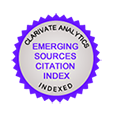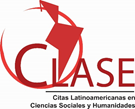Translation in the digital era: a comparative study of AI and human approaches
Keywords:
AI, Translation, Comparative analysis, Machine translation, Linguistic problemsAbstract
The goal of this research is to compare human translators with AI-powered machine translation systems. The study contrasts the two translation approaches with regard to their linguistic accuracy, semantic depth, and adaptability to different contexts. By using the frameworks of dynamic and formal equivalence theories, the study delves into the topic of translation quality. It brings to light fundamental differences between computer and human comprehension of meaning, cultural nuance, and colloquial expressions. It was found that while deep learning models and neural networks have greatly improved machine translation, human translators continue to excel in areas such as pragmatic context, ambiguity resolution, and polysemic management. The research uncovers ongoing problems with grammatical structure, lexical equivalence, and discourse coherence in machine-generated outputs. The research also emphasizes the importance of human cognition in preserving emotional tone and semantic intent. Results show that machine translation is more useful when used in conjunction with human translators than on its own, even though machine translation is fast and scalable. However, hybrid models, which include both human and AI-driven components, hold promise for the future as a means to improve precision and cultural awareness.
Downloads
Published
How to Cite
Issue
Section
License
Copyright (c) 2025 Editorial "Universo Sur"

This work is licensed under a Creative Commons Attribution-NonCommercial-NoDerivatives 4.0 International License.
La editorial "Universo Sur", de la Universidad de Cienfuegos, publica el contenido de la Revista "Universidad y Sociedad" bajo una Licencia Creative Commons Atribución-NoComercial-SinDerivar 4.0 Internacional.
© Podrá reproducirse, de forma parcial o total, el contenido de esta publicación, siempre que se haga de forma literal y se mencione la fuente.










